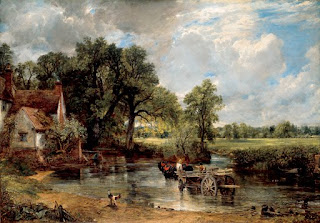A very interesting environmental art couple. They originally went by just the name Christo and did all their work together. They used to fly in separate planes in case one crashed, so that the other could be able to continue their work alone. Born on the same day in 1935, Jeanne-Claude passed away last year.
The idea is to create new ways of seeing familiar landscapes. Christo also was quoted to say work like this takes some amount of courage because it is not preserved. He posits that is it harder to create a work that is not meant to last. I thought this idea was really interesting because most artists seem to have something in them that urges them to look for ways to make a permanent lasting impression, almost as though they are seeking some kind of immortality. I liked that idea of looking at this from the opposite perspective.
Beautiful stuff:

Wrapped Coast, Little Bay, Australia, 1968-69

Running Fence, Sonoma and Marin Counties, California, 1972-76

Surrounded Islands, Miami, Florida, 1980-83

The Umbrellas, Ibaraki Prefecture, Japan and the Tejon Pass area, Southern California, 1984-91


The Gates, New York City, 2005





































